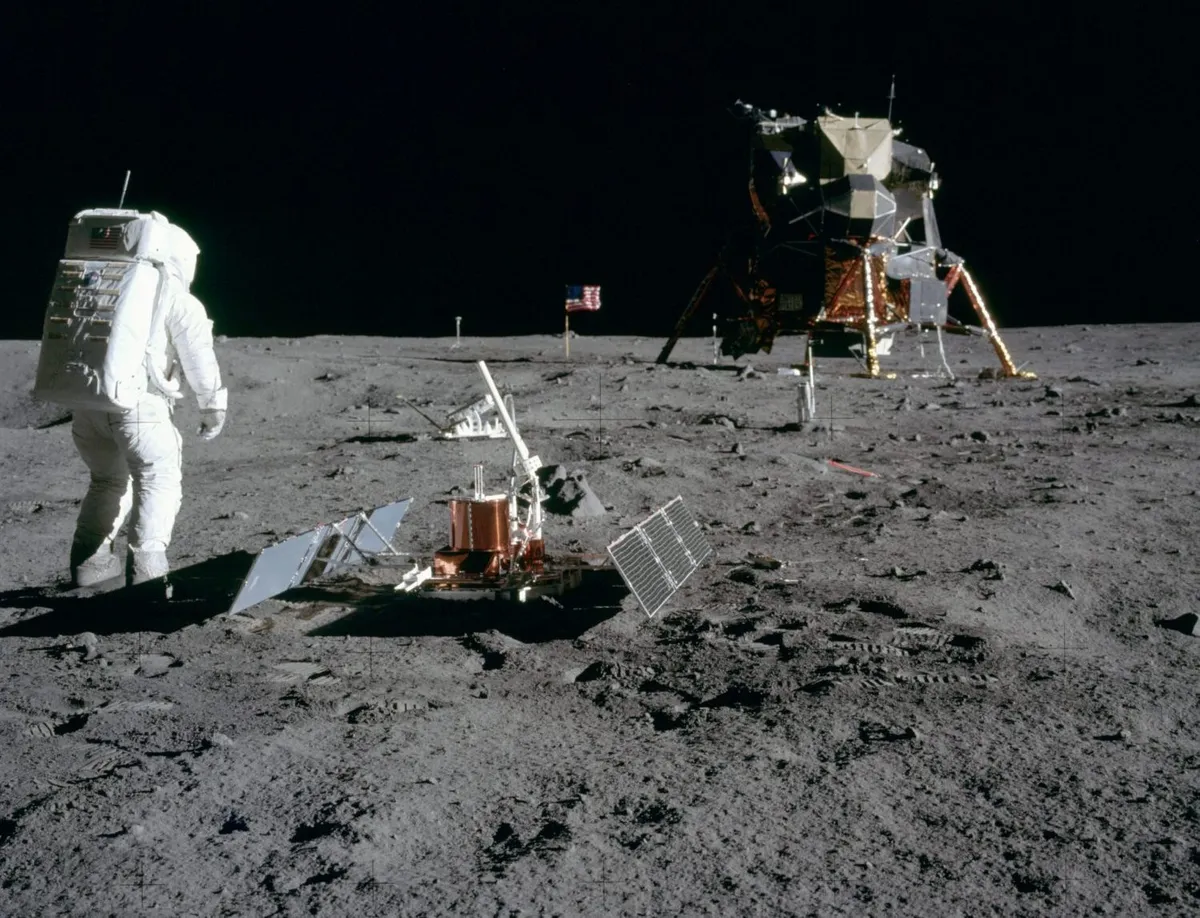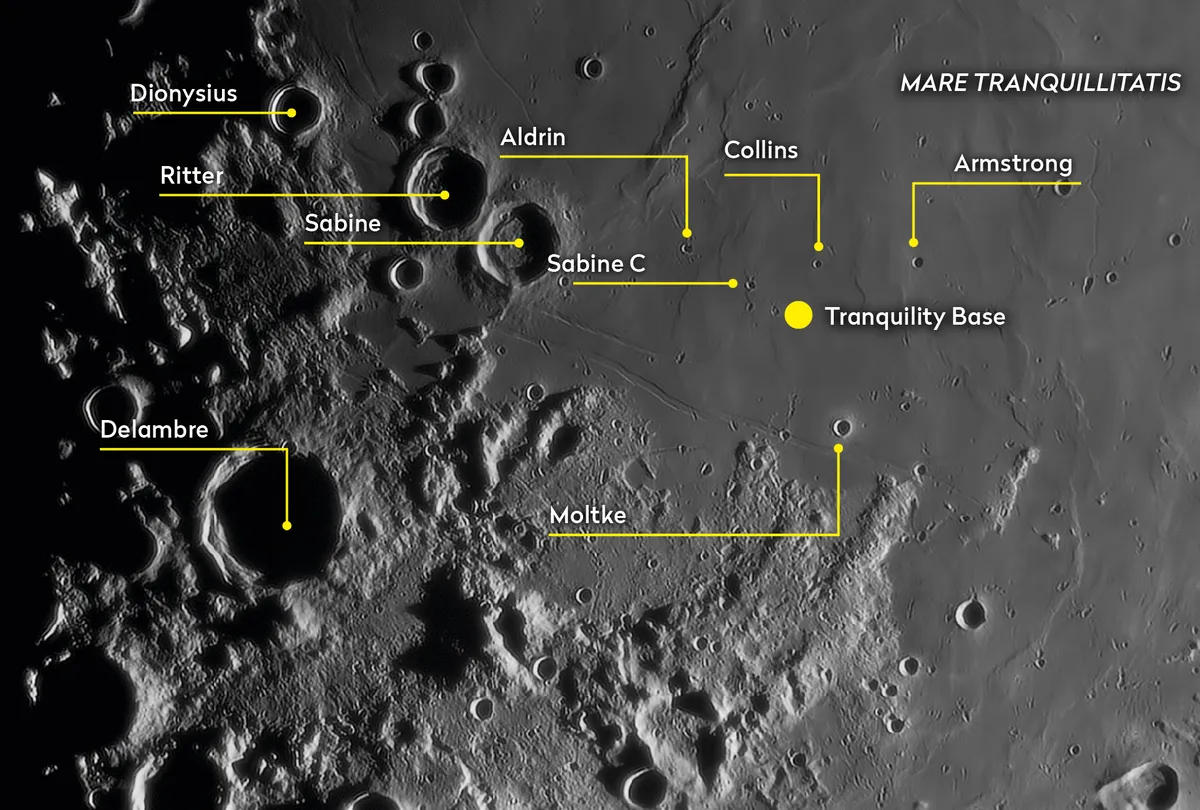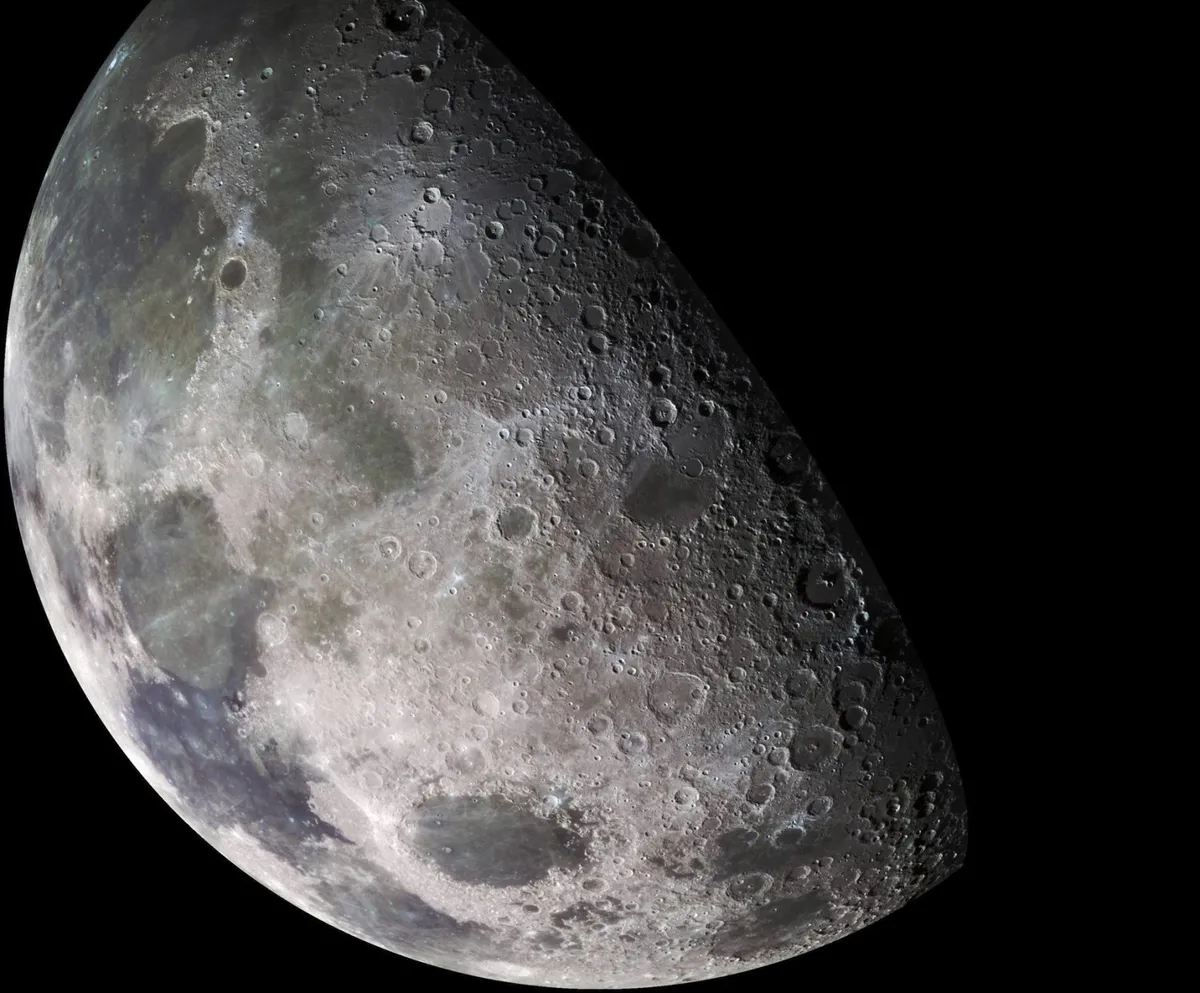Mare Tranquillitatis or the Sea of Tranquility was where the first humans on the Moon, Neil Armstrong and Buzz Aldrin of Apollo 11, touched down in 1969.
Three quotes from the astronauts will always be remembered: two from Neil and one from Buzz.
The first came from Neil: “The Eagle has landed,” and the second also from him as he stepped out onto the surface: “That’s one small step for man, one giant leap for mankind.”(Apparently he meant to say ‘a man’, but the ‘a’ was lost.)
The third was the comment by Buzz as he looked out across the plain: “Magnificent desolation.” Nothing could be more appropriate.
Read our guide on how to find Apollo 11's landing site on the Moon or, if you fancy trying to see them all, our guide on how to see all the Apollo landing sites on the Moon.
You can also start your lunar journey with our beginner's guide on how to observe the Moon.

Facts about Mare Tranquillitatis
- Size 873km
- Age Between 3.1 and 3.85 billion years
- Location Latitude 8.5ºN, longitude 31.4ºE
- Recommended observing equipment: 4-inch telescope
Tranquillitatis is one of the major lunar maria or 'seas', prominent with the naked eye; it comes into view before first quarter Moon, and parts of it remain for some time after full Moon.
The area of Mare Tranquillitatis is just about the same as our Black Sea, and it is well-defined, but lacks the regular mountainous borders of the neighbouring Mare Serenitatis.
Between the two, the magnificent high-walled crater Plinius stands sentinel. The irregular borders of the sea are due to the connections with not only Serenitatis, but also with the Mare Nectaris and Mare Fecunditatis.

To the northeast, basalt from it has flowed out on to the Palus Somni (Marsh of Sleep), which is unmistakable because of its curious straight borders to either side, together with its unusual colour; the exceptionally bright crater Proclus lies at its far end.
Proclus is only 29km across, but is so brilliant that it can be identified whenever it is sunlit. Tranquillitatis itself has a bluish tinge, probably due to a relatively high metal content in its surface material.

Our knowledge of the Moon’s past history is probably at least reasonably accurate. The Nectarian era lasted from 3.92 to 3.85 billion years ago, and was succeeded by the Imbrian, from 3.85 to 3.2 billion years ago.
The old Tranquillitatis basin, in which the mare lies, is pre-Nectarian, but the mare itself is Imbrian. The Late Heavy Bombardment, when the Moon was pelted by space debris, lasted from 4.1 to 3.8 billion years ago, so Tranquillitatis more or less escaped.

There are no major impact craters on its floor, though a few smaller ones, notably the 13km Cauchy, are surprisingly conspicuous. There are plenty of ridges and low mounds, and two long rilles, one to either side of Cauchy.
The first probe to land in Tranquillitatis was Ranger 8 in 1965. Great care was taken in the choice of a site for the first crewed mission – the site had to be radar accessible, free of major craters, and as level as possible.
The Mare Tranquillitatis seemed eminently suitable; the actual landing was at 0.7°N and 23.5°E. The area has been officially named Statio Tranquillitatis, and three small craters there have been named Armstrong, Aldrin and Collins.

If all goes well, human beings will be back on the Moon in the foreseeable future.
No doubt Statio Tranquillitatis will be revisited and become a major tourist attraction. There will be traces of that first mission, notably the bottom stage of the Eagle lander, used as a launching pad.
Future astronauts will see it, and gaze across that ‘magnificent desolation’ just as the pioneer Apollo 11 crew did many years earlier.


